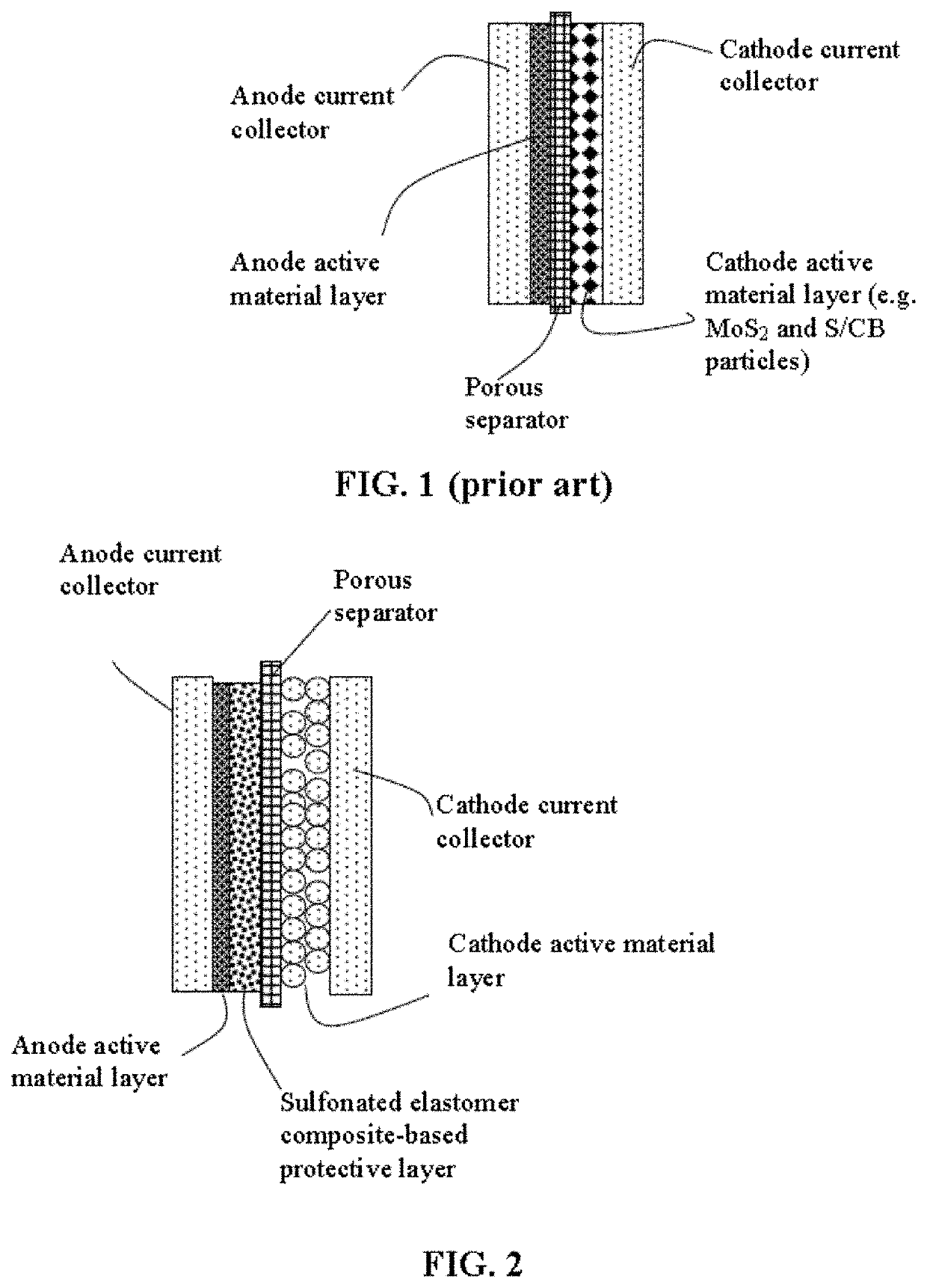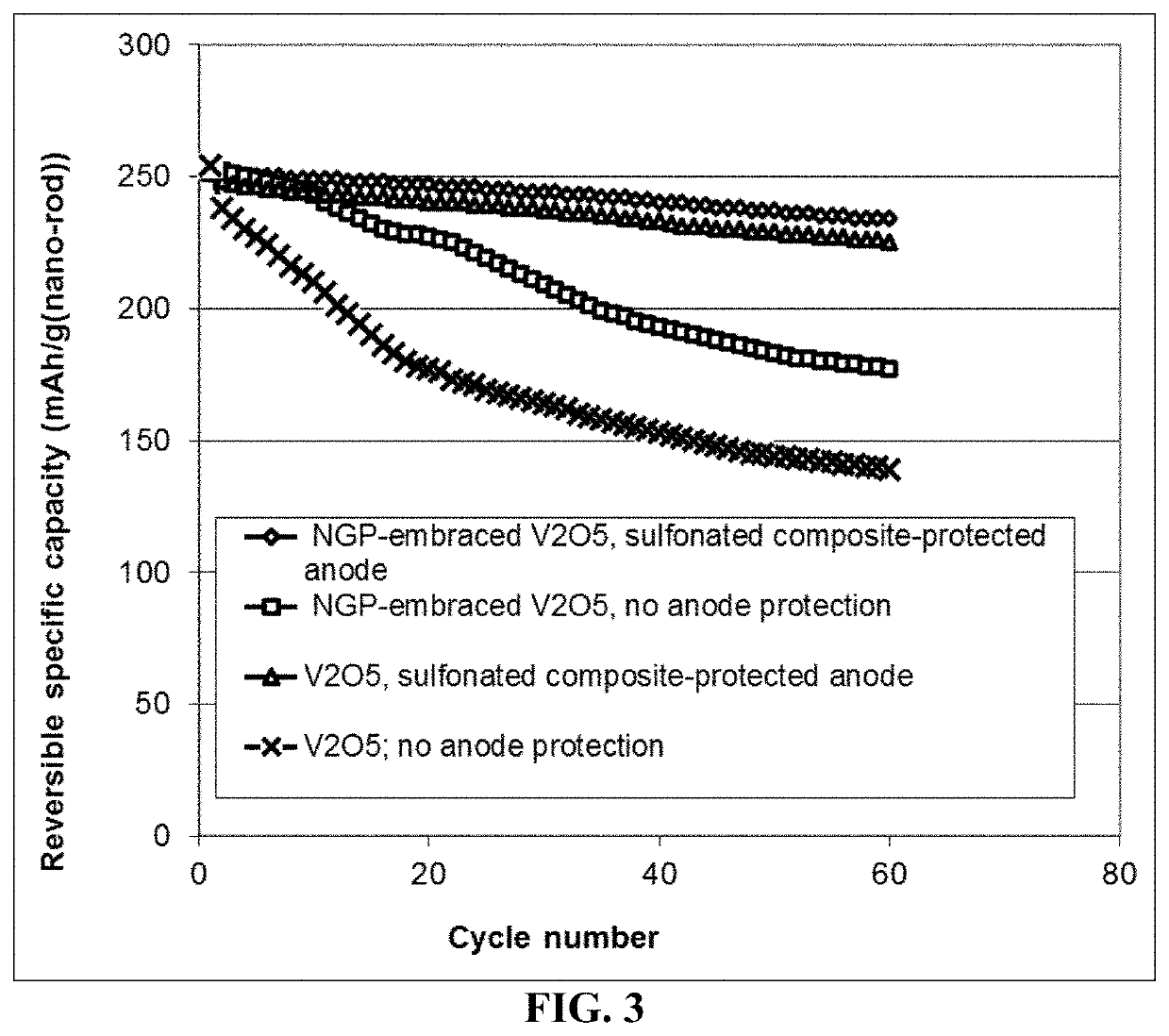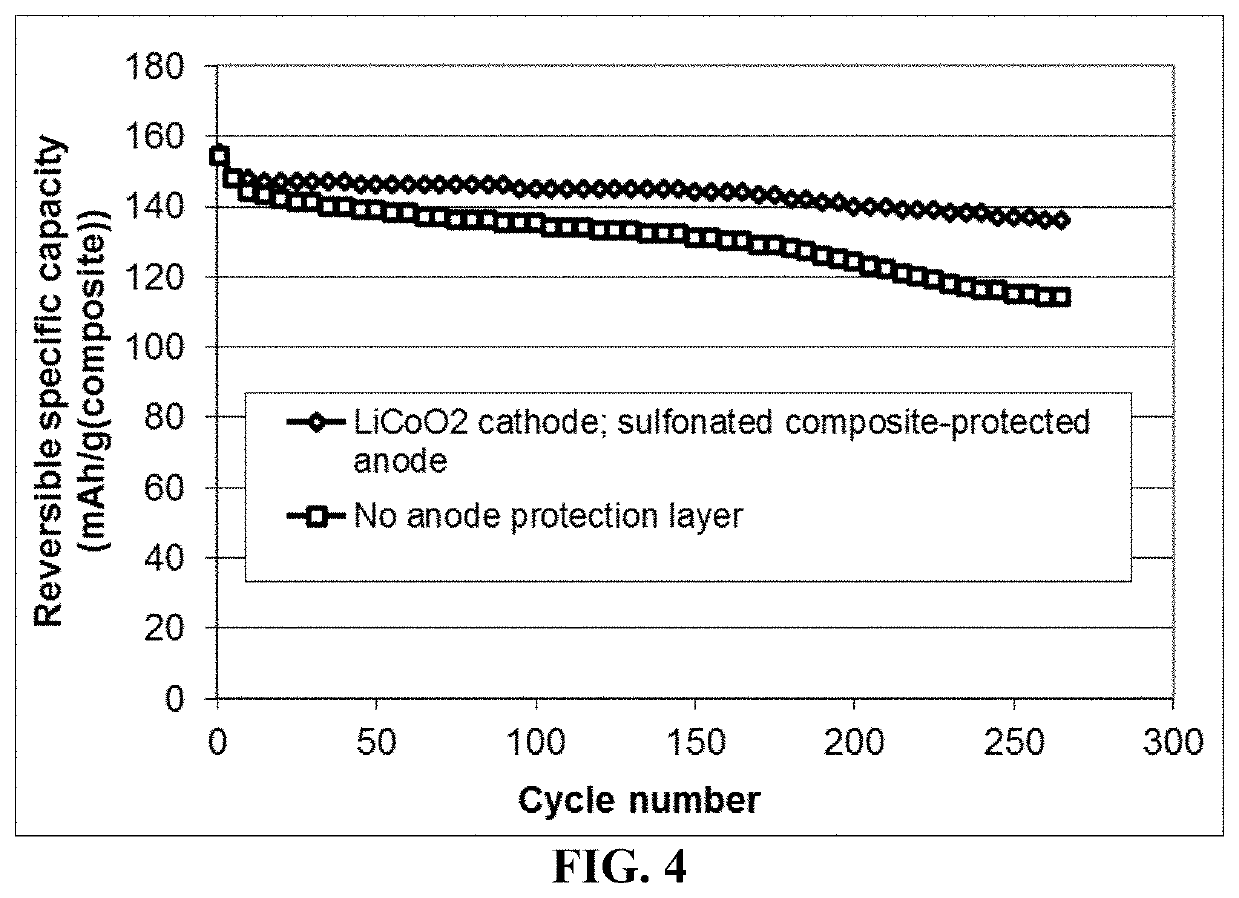Method of extending cycle-life of a lithium metal secondary battery
a secondary battery and lithium metal technology, applied in secondary cell servicing/maintenance, cell components, electrochemical generators, etc., can solve the problems of internal electrical shorting, thermal runaway, unfavorable uniform deposition of lithium metal, etc., to reduce or eliminate the lithium metal dendrite and facilitate the effect of li metal deposition uniformly
- Summary
- Abstract
- Description
- Claims
- Application Information
AI Technical Summary
Benefits of technology
Problems solved by technology
Method used
Image
Examples
example 5
n of Molybdenum Diselenide Nanoplatelets (as a Nanofiller) Using Direct Ultrasonication
[0127]A sequence of steps can be utilized to form nanoplatelets from many different types of layered compounds: (a) dispersion of a layered compound in a low surface tension solvent or a mixture of water and surfactant, (b) ultrasonication, and (c) an optional mechanical shear treatment. For instance, dichalcogenides (MoSe2) consisting of Se—Mo—Se layers held together by weak van der Waals forces can be exfoliated via the direct ultrasonication process invented by our research group. Intercalation can be achieved by dispersing MoSe2 powder in a silicon oil beaker, with the resulting suspension subjected to ultrasonication at 120 W for two hours. The resulting MoSe2 platelets were found to have a thickness in the range from approximately 1.4 nm to 13.5 nm with most of the platelets being mono-layers or double layers.
[0128]Other single-layer platelets of the form MX2 (transition metal dichalcogenide...
example 7
on of Boron Nitride Nanosheets as a Nanofiller for the Elastomer Layer
[0130]Five grams of boron nitride (BN) powder, ground to approximately 20 μm or less in sizes, were dispersed in a strong polar solvent (dimethyl formamide) to obtain a suspension. An ultrasonic energy level of 85 W (Branson 5450 Ultrasonicator) was used for exfoliation, separation, and size reduction for a period of 1-3 hours. This is followed by centrifugation to isolate the BN nanosheets. The BN nanosheets obtained were from 1 nm thick (<3 atomic layers) up to 7 nm thick.
example 8
on of Triblock Copolymer Poly(Styrene-Isobutylene-Styrene) or SIBS
[0131]An example of the sulfonation procedure used in this study is summarized as follows: a 10% (w / v) solution of SIBS (50 g) and a desired amount of graphene oxide sheets (0.15% to 40.5% by wt.) in methylene chloride (500 ml) was prepared. The solution was stirred and refluxed at approximately 40 8 C, while a specified amount of acetyl sulfate in methylene chloride was slowly added to begin the sulfonation reaction. Acetyl sulfate in methylene chloride was prepared prior to this reaction by cooling 150 ml of methylene chloride in an ice bath for approximately 10 min. A specified amount of acetic anhydride and sulfuric acid was then added to the chilled methylene chloride under stirring conditions. Sulfuric acid was added approximately 10 min after the addition of acetic anhydride with acetic anhydride in excess of a 1:1 mole ratio. This solution was then allowed to return to room temperature before addition to the r...
PUM
 Login to View More
Login to View More Abstract
Description
Claims
Application Information
 Login to View More
Login to View More - R&D
- Intellectual Property
- Life Sciences
- Materials
- Tech Scout
- Unparalleled Data Quality
- Higher Quality Content
- 60% Fewer Hallucinations
Browse by: Latest US Patents, China's latest patents, Technical Efficacy Thesaurus, Application Domain, Technology Topic, Popular Technical Reports.
© 2025 PatSnap. All rights reserved.Legal|Privacy policy|Modern Slavery Act Transparency Statement|Sitemap|About US| Contact US: help@patsnap.com



